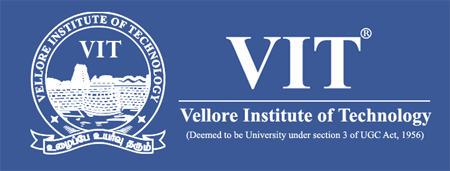
VITEEE - Syllabus
Vellore Institute of Technology Engineering Entrance Examination
Online Mode
VITEEE 2023 Syllabus: Subject wise Topics, Download Syllabus PDF, Sample Paper
Updated On - November 16 2022 by Swagota Nandi
VITEEE 2023 Syllabus has been released in online mode by VIT university on the official website. It is a University-level entrance exam conducted to offer admission in various B.Tech programs in VIT campuses. VITEEE exam will be held from 17 to 25 June 2023. The exam consists of four sections Physics, Chemistry, Mathematics or Biology and English. The given article contains all the information related to the VITEEE syllabus and students can also download VITEEE 2023 Syllabus pdf.
Application Link: VIT has released the application form for VITEEE, find the official link here.
VITEEE 2023 Syllabus
Candidates must go through the given below points related to VITEEE 2023 Syllabus:
VITEEE Syllabus for Physics
Candidates can check the physics syllabus for VIT Engineering Entrance Exam 2023 given below:
| Chapters | Topics |
|---|---|
| Laws of Motion & Work, Energy and Power |
|
| Properties of Matter |
|
| Electrostatics |
|
| Current Electricity |
|
| Magnetic Effects of Electric Current |
|
| Electromagnetic Induction and Alternating Current |
|
| Optics |
|
| Dual Nature of Radiation and Atomic Physics |
|
| Nuclear Physics |
|
| Semiconductor Devices and their Applications |
|
VITEEE 2023 Syllabus for Chemistry
Candidates can check the VITEEE entrance exam Chemistry syllabus given below:
| Chapters | Topics |
|---|---|
| Atomic Structure |
|
| p,d and f – Block Elements |
|
| Coordination Chemistry and Solid State Chemistry |
|
| Thermodynamics, Chemical Equilibrium and Chemical Kinetics |
|
| Electrochemistry |
|
| Isomerism in Organic Compounds |
|
| Alcohols and Ethers |
|
| Carbonyl Compounds |
|
| Carboxylic Acids and their derivatives |
|
| Organic Nitrogen Compounds and Biomolecules |
|
Carbohydrates – Distinction between sugars and non-sugars, structural formulae of glucose, fructose and sucrose, with their linkages, invert sugar – definition, examples of oligo and polysaccharides Amino acids – Classification with examples, Peptides-properties of peptide bond Lipids - Definition, classification with examples, the difference between fats, oils and waxes |
VITEEE 2023 Syllabus for Mathematics
Check the Mathematics syllabus of VIT Entrance Test given-below:
| Chapters | Topics |
|---|---|
| Matrices and their Applications |
|
| Trigonometry and Complex Numbers |
|
| Analytical Geometry of two dimensions |
|
| Vector Algebra |
|
| Analytical Geometry of Three Dimensions |
|
| Differential Calculus |
|
| Integral Calculus and its Applications |
|
| Differential Equations |
|
| Probability Distributions |
|
| Discrete Mathematics |
|
VITEEE Syllabus for Biology
Candidates should go through the given below information regarding the VITEEE 2023 syllabus for biology paper:
| Chapters | Topics |
|---|---|
| Taxonomy |
|
| Cell and Molecular Biology |
|
| Reproduction |
|
| Genetics and evolution |
|
| Human health and diseases |
|
| Biochemistry |
|
| Plant physiology |
|
| Human physiology |
|
| Biotechnology and its applications |
|
| Biodiversity, ecology and environment |
|
VITEEE 2023 Syllabus for English
Candidates can check the syllabus for VITEEE entrance exam English section given below:
| Chapters | Topics |
|---|---|
| Comprehension |
|
| English Grammar and Pronunciation | - |
Candidates also download the detail VITEEE Syllabus 2023 PDF given below:
- VITEEE Physics Syllabus 2023 PDF
- VITEEE Chemistry Syllabus 2023 PDF
- VITEEE Mathematics Syllabus 2023 PDF
- VITEEE Biology Syllabus 2023 PDF
- VITEEE English & Aptitude Syllabus 2023 PDF
VITEEE 2023 Sample Paper
Candidates can check the VITEEE sample paper mentioned below:
- Physics Sample Paper
- Chemistry Sample Paper
- Mathematics Sample Paper
- Biology Sample Paper
- English & Aptitude Sample Paper
Also, Check:
Form Start Date:
11 Nov 2022
Form End Date:
31 Mar 2023
The last date to submit the form was on 31 Mar 2023
Browse Other ExamsExamination Date (Online):
17 Jun - 25 Jun 2023
Application Fees:
₹ 1,150

Comments